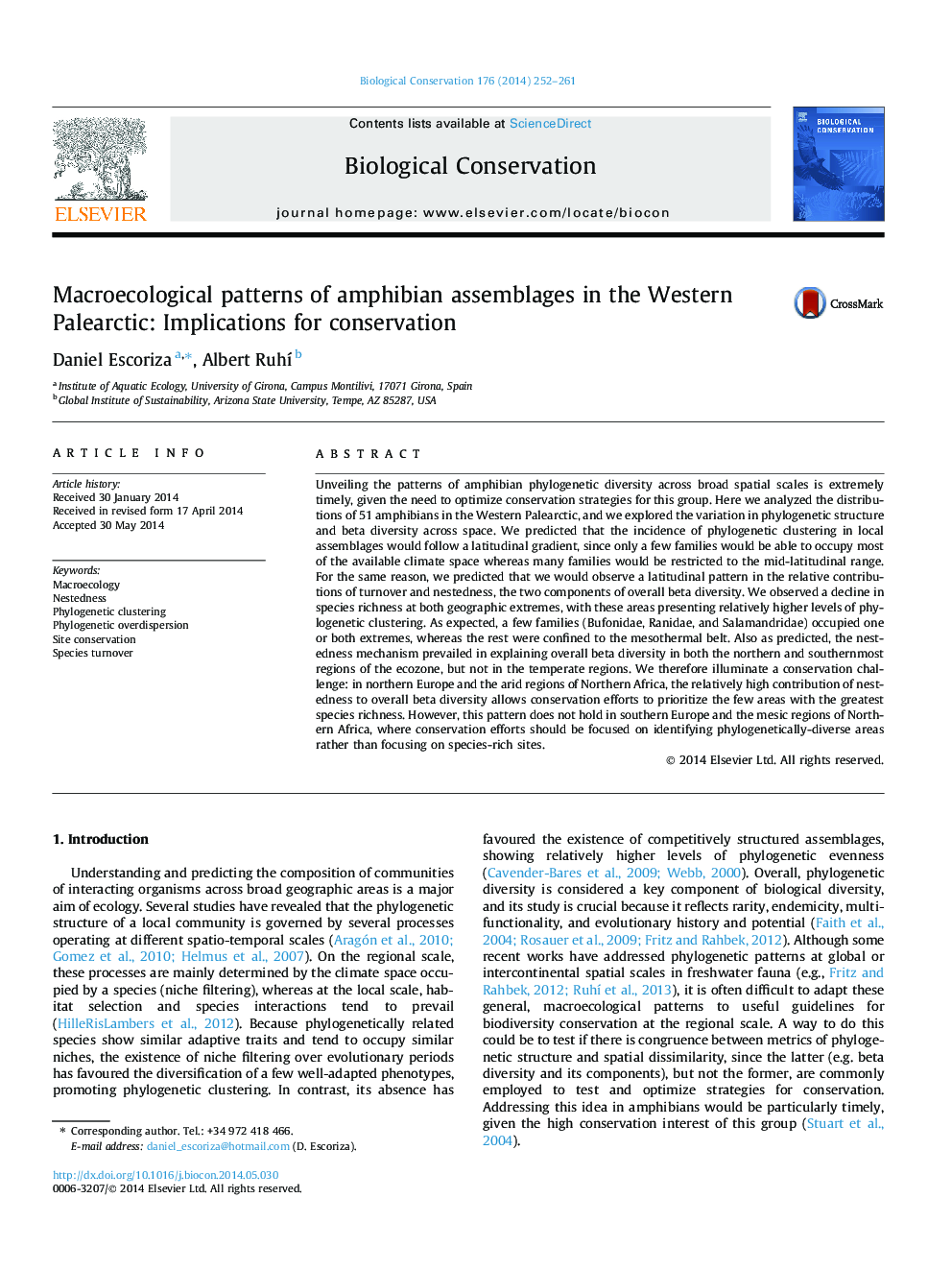| Article ID | Journal | Published Year | Pages | File Type |
|---|---|---|---|---|
| 6299488 | Biological Conservation | 2014 | 10 Pages |
Abstract
Unveiling the patterns of amphibian phylogenetic diversity across broad spatial scales is extremely timely, given the need to optimize conservation strategies for this group. Here we analyzed the distributions of 51 amphibians in the Western Palearctic, and we explored the variation in phylogenetic structure and beta diversity across space. We predicted that the incidence of phylogenetic clustering in local assemblages would follow a latitudinal gradient, since only a few families would be able to occupy most of the available climate space whereas many families would be restricted to the mid-latitudinal range. For the same reason, we predicted that we would observe a latitudinal pattern in the relative contributions of turnover and nestedness, the two components of overall beta diversity. We observed a decline in species richness at both geographic extremes, with these areas presenting relatively higher levels of phylogenetic clustering. As expected, a few families (Bufonidae, Ranidae, and Salamandridae) occupied one or both extremes, whereas the rest were confined to the mesothermal belt. Also as predicted, the nestedness mechanism prevailed in explaining overall beta diversity in both the northern and southernmost regions of the ecozone, but not in the temperate regions. We therefore illuminate a conservation challenge: in northern Europe and the arid regions of Northern Africa, the relatively high contribution of nestedness to overall beta diversity allows conservation efforts to prioritize the few areas with the greatest species richness. However, this pattern does not hold in southern Europe and the mesic regions of Northern Africa, where conservation efforts should be focused on identifying phylogenetically-diverse areas rather than focusing on species-rich sites.
Related Topics
Life Sciences
Agricultural and Biological Sciences
Ecology, Evolution, Behavior and Systematics
Authors
Daniel Escoriza, Albert RuhÃ,
